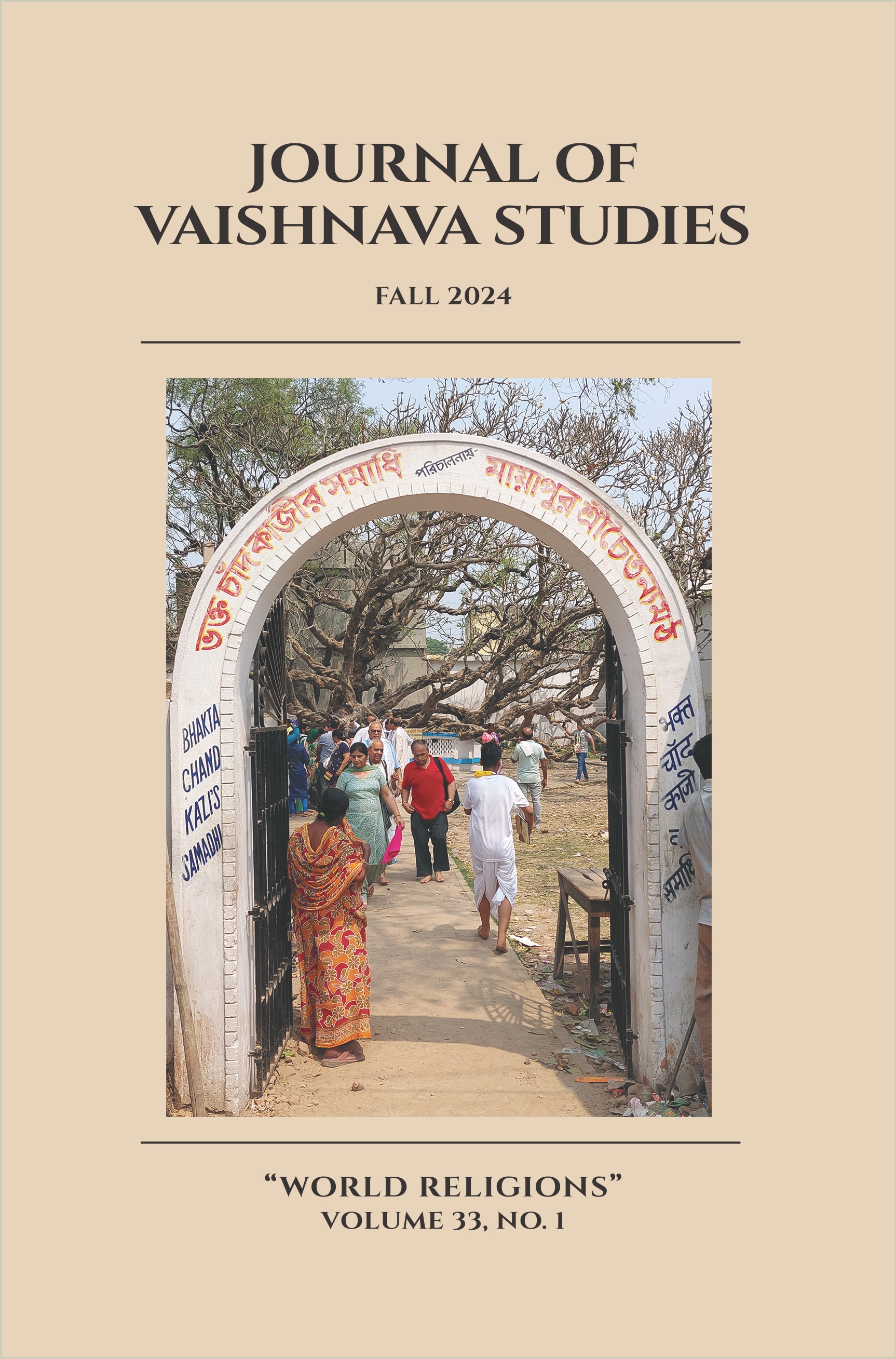The Mahamantra and The Tetragrammaton
Mystical Imagination in Gaudiya Vaishnavism and Prophetic Kabbalah
Keywords:
Gaudiya Vaishnavism, Prophetic Kabbalah, mahamantra, tetragrammaton, Abraham Abulafia, bhakti, devekut, mystical sound, visionary meditation, comparative mysticismAbstract
This comparative study explores the mystical practices of Gaudiya Vaishnavism and Abraham Abulafia’s Prophetic Kabbalah, focusing on their shared emphasis on sacred sound (the Hare Krishna mahamantra and the Hebrew tetragrammaton YHVH) and visionary meditation as pathways to divine encounter. In Gaudiya Vaishnavism, ecstatic devotion (bhakti) to Krishna and Radha is cultivated through ritualized emotion (raga-bhakti), visualization of celestial lilas, and chanting, culminating in states of prema (selfless love) and mahabhava (divine madness). Parallelly, Abulafia’s Kabbalah employs letter combinations (tzeruf), rhythmic chanting, and breathwork to untie the soul’s "knots," inducing prophetic ecstasy (devekut) and union with the Divine Intellect. Both traditions frame divine names as ontologically identical to God, capable of transforming practitioners’ identities (e.g., Vaishnava manjari-sadhana; Kabbalistic rebirth through the "image of God"). Key divergences lie in their soteriological goals: Vaishnavism seeks eternal service in Krishna’s lila, while Kabbalah aims to restore prophetic agency for communal redemption. The article highlights seven structural parallels, including the erotic theology of divine couples (Radha-Krishna/Yahweh-Shekinah) and the somatic expression of ecstasy (sattvika bhavas; trembling and joy).Published
2024-12-13
Issue
Section
Articles





